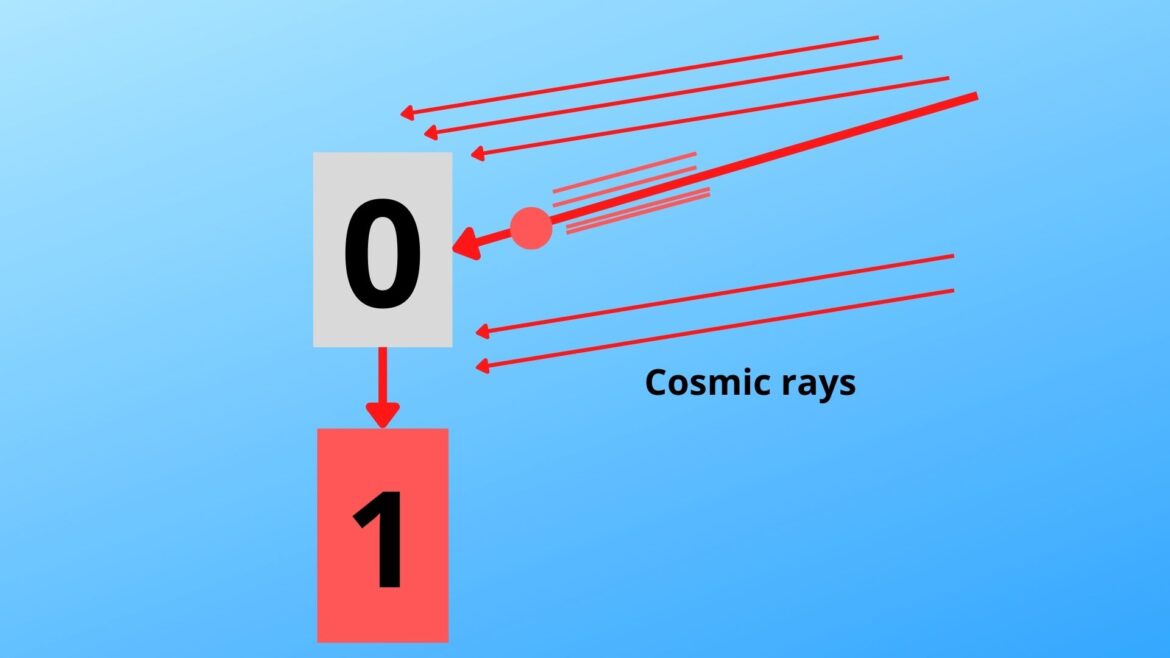Programmers know that single-event upsets are one of the most annoying reasons for a program malfunction because there isn’t even a bug causing this in their software. Today, in this article, we’ll explore what a single-event upset is and how it should be avoided and dealt with.
The Definition and Manifestation of Single-event Upsets
Single-event upsets are caused by ionizing, high-energy particles striking sensitive components of an electric circuit. This disrupts the operation of the circuit and causes the computer to make errors even though there is no error in the program controlling it.
Where do these high-energy particles come from? Most of them are cosmic rays. They are free-floating charged particles wandering through space, like standalone protons and nuclei. They are a form of ionizing radiation and can reach speeds of up to less than one meter per second slower than the speed of light, so they carry large amounts of energy. These particles are perfect for creating single-event upsets.
One of the most common consequences of a single-event upset is a bit flip. That means, in the location affected, the bit involved changes to the value different from the intended one. This causes the processor to produce an incorrect result when performing computation since the error propagates down the stream of operations.
It is essentially a one-time error, so the “single-event” is contained in the name of this kind of event. Therefore, it is notorious for developers, as they always assume an intrinsic bug within the program is causing the issue and attempt to fix the underlying root cause even when there’s none in that case.
Where Are Single-event Upsets Common?
Because of their origins, single-event upsets are more common in some places than others. For instance, they are more prevalent in space than on Earth because the atmosphere often shields us from these particles coming from outer space. They are also common in orbits of planets since radiation belts from magnetic fields might contain particles that may disrupt the operations of a computer.
Thus, spacecraft are fitted with extra mechanisms, like installing additional protective layers around the sensitive components inside the system, to prevent single-event upsets from occurring and affecting the space probe’s systems. This is suitable for use when a program has to get everything right at the first time, for instance, and when interference must be prevented at all costs.
How Can Developers Deal With Single-event Upsets?
Since single-event upsets are inevitable, programmers cannot optimize their programs to prevent these errors from occurring. Instead, they can set up error-handling mechanisms, in which the program’s progress is monitored, and once it makes an exception, it does something else, like writing up a report and sending it to the developers or simply retrying the problematic operation.
Although events like these are sporadic, it’s always worth it to add these functions to the program because there might be other, more common things that might cause glitches, such as when a race condition occurs or when a computer has reached its resource limits and cannot fork a process again.
Conclusion
In this article, we’ve talked about what a single-event upset is, where it comes from, and how developers deal with it so that their program runs smoothly while dealing with it. If we missed any critical points that we should have included, please leave these in the comments below so that our article will be more complete.
References and Credits
- (n.d.). Single Event Upset. Retrieved July 17, 2022, from https://www.usgs.gov/land-resources/nli/landsat/single-event-upset
- (n.d.). Help: Single event upsets. Retrieved July 17, 2022, from https://www.spenvis.oma.be/help/background/creme/creme.html
- (2021, October 19). Single Event Effects. Retrieved July 17, 2022, from https://radhome.gsfc.nasa.gov/radhome/see.htm
- Elizabeth Howell. (2018, May 10). What Are Cosmic Rays? Retrieved July 17, 2022, from https://www.space.com/32644-cosmic-rays.html

